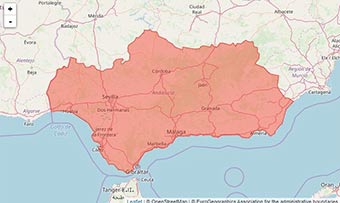A project for the design, construction and equipping of an oceanographic vessel will give the Spanish Institute of Oceanography (IEO) the capacity to conduct research across the world. The new vessel will allow scientists to study marine ecosystems and assess a range of environmental characteristics.
Spain’s new multipurpose oceanographic research vessel will have a global remit
- 17 December 2019
The new vessel will operate from Cadiz, in Andalucía, Spain. The city has been chosen as the operational port because its location will enable the IEO to cover the South Atlantic and the Canary Islands. The base will also allow the ship to reach the Indian and Pacific Oceans via the Suez Canal.
The project will increase the IEO’s operational capacity, enabling it to undertake new roles and challenges. Currently, the institute only has vessels that can operate regionally. In fact, the new ship will be a first for Spain in terms of global reach.
Advanced systems
A number of advanced systems will enable the vessel to cover the full range of ocean depth (around 6 000 m) with maximum precision. Scientists will be able to carry out their research using a variety of equipment and technologies, such as an acoustic detection tool, trawling gear and video cameras. They will be able to take samples from the sea bed using underwater vehicles and robots operated from the vessel.
The ship will be capable of spending 45 days at sea and accommodate 40 researchers. It will be able to carry out five to seven research campaigns every year. That comes to around 240 days of activity at sea per year – excluding transits – resulting in 9 600 people/days of research annually.
In its operational phase, the vessel will carry a complement of 26 crew and generate 50 jobs directly. Of these posts, 15 will be qualified officers with a high degree of specialisation. The rest will be trained marine professionals.
Vital research
The vessel’s reach and technologies give researchers the opportunity to study marine species from different habitats, across the jurisdiction of several countries. It will be possible to study the vertical distribution of species at sea and observe their life stages.
This work will help improve the sustainable management of the marine environment. Because it is equipped with the latest technologies for navigation, fishing, surveillance and data collection, the vessel can be deployed to provide more accurate assessments of fishery resources.
In general terms, this project will boost Spanish research, development and innovation excellence across the maritime sector in areas such as ship design and building, sustainable exploitation of fisheries and protection of the marine environment.
The vessel’s deployment will help the IEO develop cooperation with national institutions in oceanographic, fisheries and aquaculture R&D activities. It will boost the institute’s role in forging international oceanographic-fisheries cooperation. Lastly, the project will contribute to the training of future technicians and scientists, improving their competitiveness in the labour market.
Total investment and EU funding
Total investment for the project “Multipurpose oceanographic vessel with a global remit” is EUR 85 445 058, with the EU’s European Regional Development Fund contributing EUR 68 356 046 through the “Multiregional Spain ERDF” Operational Programme for the 2014-2020 programming period. The investment falls under the priority “Boosting research, technological development and innovation”.

